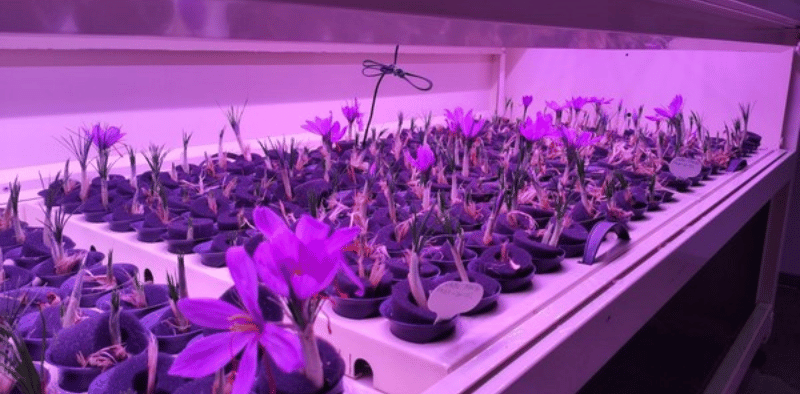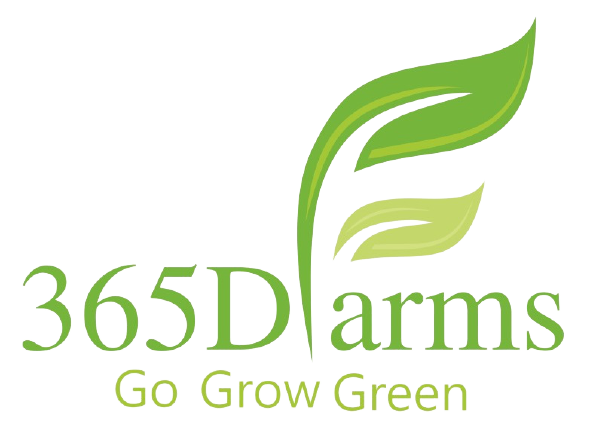
Introduction
As the global population continues to rise and arable land diminishes, finding innovative and sustainable ways to produce food has become a pressing concern. Enter hydroponic farming, a revolutionary agricultural technique that offers numerous advantages over traditional soil-based methods. In this blog, we will delve into the world of hydroponics and explore why it holds the key to the future of agriculture. In the quest for sustainable and efficient agricultural practices, hydroponic farming has emerged as a revolutionary solution that holds the potential to transform the future of agriculture. Unlike traditional soil-based farming, hydroponics is a method of cultivating crops without the need for soil, utilizing nutrient-rich water solutions instead. This innovative approach to growing plants offers a multitude of advantages that make it a compelling choice for addressing the challenges faced by conventional agriculture.
Another remarkable advantage of hydroponics is its significantly higher crop yields. By optimizing nutrient delivery and root oxygenation, plants in hydroponic systems can grow faster and produce larger, healthier fruits and vegetables. These elevated yields not only contribute to food security but also present an opportunity to free up land resources for conservation and other essential purposes.
Efficient Resource Utilization
One of the significant advantages of hydroponic farming is its efficient use of resources. Unlike conventional farming, which requires vast amounts of water and fertilizers, hydroponics relies on a recirculating system that uses up to 90% less water. Additionally, nutrients are delivered directly to the plant’s roots, reducing nutrient wastage and minimizing the need for chemical additives. Hydroponic farming exemplifies efficient resource utilization in modern agriculture. By harnessing this innovative cultivation method, hydroponics optimizes the use of water, land, and nutrients to produce abundant and high-quality crops. Unlike conventional farming, which often experiences significant water wastage and nutrient runoff, hydroponics recirculates nutrient-rich water within a closed system, drastically reducing water consumption. Additionally, the controlled environment of hydroponic systems minimizes the need for chemical pesticides and fertilizers, promoting eco-friendly and sustainable agriculture. The ability to grow crops vertically in limited spaces further maximizes land usage, making hydroponics an ideal solution for urban farming. As the demand for food rises amid growing population and environmental challenges, hydroponic farming stands as a shining example of how efficient resource utilization can address food security, minimize environmental impact, and pave the way for a more sustainable and resilient future in agriculture.
Year-Round Crop Production
With hydroponics, farmers are no longer bound by seasonal limitations. By creating controlled environments such as greenhouses, crops can be grown year-round, regardless of external weather conditions. This continuous production not only ensures a stable food supply but also reduces the pressure on traditional agricultural lands. Hydroponic farming offers the remarkable advantage of year-round crop production, overcoming the limitations imposed by traditional seasonal farming practices. By eliminating the dependence on external climate conditions and soil quality, hydroponic systems provide an ideal environment for continuous cultivation, regardless of the time of year or geographical location. With precise control over temperature, humidity, light, and nutrient delivery, farmers can create optimal conditions that mimic the most favorable growing seasons. This means that fruits, vegetables, and herbs can be cultivated throughout the year, ensuring a steady and consistent supply of fresh produce to meet the demands of consumers regardless of seasonal fluctuations. Year-round crop production through hydroponics not only enhances food security but also reduces our reliance on long-distance transportation and fossil fuels, making it a sustainable and efficient solution for meeting the world’s growing nutritional needs.
Space Efficiency
Hydroponics takes up significantly less space compared to conventional farming methods. By cultivating plants vertically or in compact systems, hydroponic farms can achieve higher yields per square meter. This vertical expansion not only maximizes land use but also allows farming in urban areas, bringing agriculture closer to consumers. Hydroponic farming demonstrates exceptional space efficiency, revolutionizing how we utilize land for agricultural purposes. By eliminating the need for soil, hydroponic systems allow crops to be grown vertically, stacked in multiple layers, or even suspended in air, maximizing the use of available space. This vertical farming approach is particularly advantageous in urban areas where land is limited and expensive. Abandoned buildings, rooftops, and unused spaces can be transformed into thriving hydroponic farms, bringing agriculture closer to consumers and reducing the carbon footprint associated with long-distance food transportation. Moreover, the controlled environment of hydroponic setups minimizes the risk of pest infestations and diseases, enabling crops to be grown in close proximity without the need for chemical treatments. As we face a growing global population and the pressure to conserve natural habitats, hydroponic farming’s space efficiency offers a sustainable solution to produce more food with fewer resources while transforming non-traditional spaces into productive, green landscapes.
Pest and Disease Control
The isolation of hydroponic systems from soil minimizes the risk of pests, diseases, and weeds. With no soil to harbor harmful organisms, farmers can reduce or eliminate the need for chemical pesticides, making hydroponic produce healthier and safer for consumers. Hydroponic farming excels in pest and disease control, revolutionizing agricultural practices by minimizing the reliance on chemical pesticides and promoting a healthier, more sustainable approach. Unlike traditional soil-based farming, where pests and diseases can easily spread through the soil, hydroponic systems provide a controlled environment that greatly reduces the risk of infestations. The absence of soil eliminates common soil-borne pathogens, leading to healthier and more resilient plants. Additionally, the closed and controlled nature of hydroponic setups allows for strict monitoring and early detection of any potential issues.
Faster Growth Rates
Hydroponic plants often grow faster than their soil-grown counterparts. With direct access to nutrients, oxygen, and water, plants can focus their energy on growth and development, leading to quicker maturation and higher yields. This accelerated growth also means more frequent harvests and increased productivity. Hydroponic farming offers a significant advantage in achieving faster growth rates for crops compared to traditional soil-based cultivation. By directly delivering a carefully balanced nutrient solution to the plant’s root system, hydroponic systems provide an optimal and readily available supply of essential nutrients. This efficient nutrient uptake, along with controlled environmental conditions, eliminates the need for plants to search for nutrients in the soil, allowing them to focus on rapid and vigorous growth. The precise control over factors such as light, temperature, and humidity further enhances plant metabolism, promoting accelerated growth rates and shorter crop cycles.
Consistent Crop Quality
In hydroponic farming, every aspect of the environment can be precisely controlled. From temperature and humidity to pH levels and nutrient concentrations, the conditions can be tailored to suit the specific needs of each crop. This control results in consistent crop quality, appearance, and taste, satisfying consumers and increasing market demand. Hydroponic farming ensures consistent crop quality by creating an optimal and controlled environment for plant growth. Unlike traditional farming, where soil composition and external factors can lead to variations in crop quality, hydroponic systems provide a consistent and stable nutrient supply. This precise nutrient delivery allows plants to receive the exact amount of essential elements they need, resulting in uniform growth and development. Additionally, the absence of soil-borne diseases and pests in hydroponic setups eliminates the risk of contamination, ensuring that crops are free from harmful substances and consistently healthy.
Reduced Environmental Impact
By minimizing water usage, eliminating chemical runoff, and curbing greenhouse gas emissions associated with traditional farming, hydroponics significantly reduces its environmental impact. As the world faces the challenges of climate change, adopting sustainable practices like hydroponics becomes increasingly crucial. Hydroponic farming stands as a pioneering solution to reduce the environmental impact of conventional agriculture. By eliminating the need for soil, hydroponic systems minimize soil erosion and degradation, preserving precious land resources. Furthermore, the efficient use of water in closed-loop systems drastically reduces water consumption compared to traditional farming methods. As a result, hydroponics alleviates the strain on water supplies, especially in regions facing water scarcity and droughts. Additionally, the controlled environment of hydroponic setups mitigates the need for chemical pesticides and fertilizers, reducing the risk of soil and water contamination. This eco-friendly approach promotes biodiversity, as it fosters healthier ecosystems by minimizing disruptions caused by agricultural runoff and harmful chemicals.
Conclusion
Hydroponic farming is more than just a passing trend; it represents a paradigm shift in agriculture that addresses many of the challenges faced by traditional farming methods. From resource efficiency and space utilization to consistent crop quality and reduced environmental impact, hydroponics offers numerous advantages that make it the future of agriculture.
As technology and knowledge continue to advance, we can expect even more innovations in hydroponic farming, making it an integral part of our journey towards a more sustainable and food-secure future. Embracing hydroponics today means investing in a better tomorrow for both farmers and consumers alike.



How much it costs to set up a saffron farm.is there any training available?
I am interested in setting up a saffron farm.
Thanks
Saffron & Hydroponic Training workshop
_____________________________
Date : 2nd & 3rd September 2023
Time : 10.30am to 5pm
Location : Warje,Pune
Total Fees per person : 15000/-
Registration fees- 5000/- (Advance)
Gpay/Phonepay No: 9767589994
Note :Accommodation not included in this
Thanks From :- Team 365Dfarms 🙏
Please confirm your seat by paying registration fees through Phonepay/Gpay .